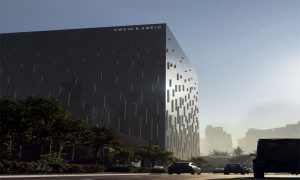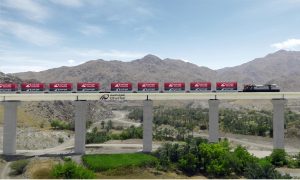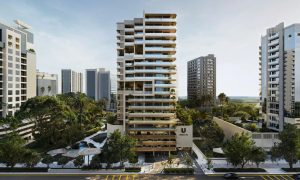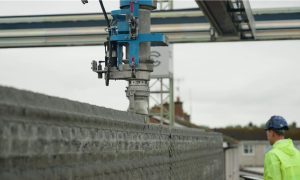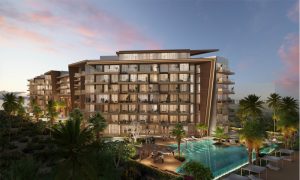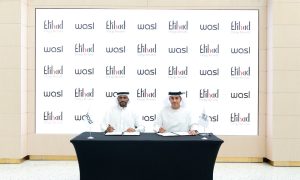“We have 93% certainty within the next five years of hitting new temperature highs”
Many economists agree that the global adoption of carbon taxes is required to enforce industry change says WSP Middle East’s Sophia Kee

“We must eliminate all CO2 emissions from the built environment by 2040 to meet the 1.5-degrees Celsius climate targets. This commitment is a significant challenge; it helps to look at the emissions sources broken down within this; 27% are due to operations, 10% for materials and construction and 10% for ‘other’ in the construction industry,” said Sophia Kee, WSP Middle East’s recently appointed Head of Future Ready – Property & Buildings. Kee made the remarks exclusively to Middle East Construction News (MECN) in response to a question about why greenhouse gas (GHGs) emissions continue to rise despite concerted global efforts to cap them.
She elaborates, “If we look at operations first, as this segment is responsible for the majority of CO2 emissions within the built environment, these emissions are typically a direct consequence of energy consumed to cool, ventilate, power and light our spaces. These building service processes can be optimised very early in the design process to capitalise on passive design strategies, in collaboration with architecture and building services to undertake studies such as shoebox modelling of multiple option iterations to establish an optimised green building that has low solar gains, is naturally ventilated, daylit, and with services optimally designed.”
“This optimised passive and active design workflow is challenging to implement whilst balancing aesthetic requirements, project deadlines and budgets, and challenging environmental conditions such as high ambient temperatures, humidity, dust, solar gains with low diurnal temperature fluctuations resulting in reliance on energy for building operations in the Middle East,” she points out.
Kee also notes that despite global efforts to transition towards low-carbon energy, there are a lack of government regulations to restrict emissions. She adds, “Many economists agree that the global adoption of carbon taxes is required to enforce industry change.”

In May 2022, a report by the WMO said that there’s a 50:50 chance of global temperature temporarily reaching the 1.5-degrees Celsius threshold in the next five years. This is despite the fact that 196 parties adopted the Paris Agreement on 12 December 2015, following which it entered into force on 4 November 2016. The ongoing goal of the legally binding international treaty on climate change is to limit global warming to well below 2-degrees Celsius, preferably to 1.5-degrees Celsius, compared to pre-industrial levels.
Pressed for her reaction to the WMO report, Kee remarks, “The World Meteorological Organisation’s latest update highlights the urgency of required catalysts of change within the built environment; this data doesn’t lie, we have 93% certainty within the next five years of hitting new temperature highs and we are getting closer to reaching the climate tipping point, which the world agreed to avoid as part of the Paris Agreement in 2015.”
“This data illustrates two major factors within the built environment that we need to prepare for and consider holistically in order to mitigate climate change resulting from GHG emissions. Firstly, we need to increase our capabilities within the industry and raise awareness with our clients to drive the assessment of carbon footprint within the decision-making process at multiple gateways of a project. This affects the project timeline including additional iterations during conceptual studies and massing, planning, façade and building system development, material procurement, and selecting construction methods. It is essential that this is an integrated part of the design process and includes all key stakeholders from start to finish to fully understand the climatic impacts of our decisions.”
She urges, “Secondly, we rapidly need to begin shifting from ‘business as usual’ and creating a sense of urgency within the industry to plan and design developments that consider the projected environmental, social, technological and mobility scenarios and trends in the future. We are gradually shifting towards providing buildings and developments that are flexible in space usage change, de-constructable, and accommodate modular technology upgrades. This is no simple feat in the region. However, we foresee this beginning to evolve by influencing the client-led decision-making process to account for energy, environmental, and social impacts.”

Kee believes that the WMO data shines a light on two very pressing future factors, and says the silver lining to this tale of two stories is that it’s not too late.
She concludes, “In the Middle East, we’re seeing pockets of meaningful climate action taking place as ambitious climate pledges and sustainability-centric projects are unveiled, particularly in the Kingdom of Saudi Arabia. At WSP Middle East, we’re witnessing a renewed sense of possibility for ingraining greener principles and frameworks into the fabric of these Future Ready developments. For instance, we’re proud to be helping The Red Sea Development Company realise its vision for regenerative tourism on many fronts. Similarly, NEOM’s unprecedented scope for embedding sustainability virtues is world leading, as is the King Salman Park Foundation’s mandate for creating the world’s largest green urban park in the heart of Riyadh.”
In June, WSP & TRSDC announced that they were looking at decarbonised mobility solutions at The Red Sea Project. WSP also made two senior appointments to its Property & Buildings business during the month.



